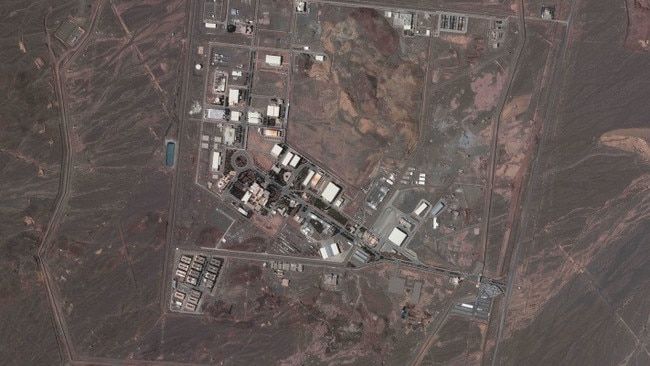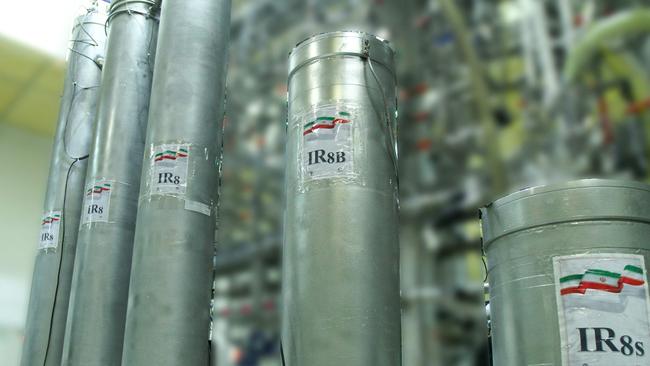Why Iran’s nuclear advances make a deal harder this time

The Trump administration is calling for a complete dismantling of Iran’s nuclear program, going further than the 2015 agreement negotiated by the Obama administration and which President Trump took the US out of in 2018. That agreement placed tight but temporary restrictions on Iran’s nuclear work.
Yet Iran in the past decade has moved close to being able to build a nuclear weapon, according to Western officials. It has also massively upgraded its enrichment program. Even if Iran agrees to scale back some of that work, it has gained vital nuclear know-how that can’t be unwound, the officials say.

Building nuclear weapons
The most consequential change in Iran’s nuclear program since 2015 is how close Iran has come to being able to build some kind of basic nuclear weapon. While Iran insists its nuclear work is for purely peaceful purposes, US intelligence officials say Tehran has chipped away at the gaps in its weapons-building knowledge although they don’t believe a decision has been made to build a bomb.
Last year, US intelligence said Iran was carrying out computer modelling and metallurgy experiments that would help it construct nuclear weapons. US officials and experts say it would take Iran a few months to build a basic nuclear weapon, one which would be too big to deliver by ballistic missiles but could have explosive power similar to the original American bombs dropped on Japan.
That would mean a new deal would require far greater powers for inspectors to go to sites where they suspected weapons-related work was taking place. That could include access to military sites where research is believed to have taken place in recent years. Iran has pushed hard against permitting that.

Ending enrichment
The Obama administration’s decision in 2013 to allow Iran some form of future uranium enrichment was a key concession that helped unlock the 2015 nuclear deal. Iran’s insistence on its right to enrich under international law has been the reddest of red lines that Tehran has set around its nuclear program.
Since 2021, Iran is producing highly enriched uranium for the first time. It is now accumulating 60 per cent material at the pace of roughly one nuclear weapon’s worth a month. It would take Iran just a week or two to convert enough of that 60 per cent material into 90 per cent weapons-grade fuel for one bomb. Tehran may agree to scaling back its enrichment and scrapping some of its fissile stockpile as it did in 2015. Iran may demand far greater sanctions rewards to even contemplate dismantling its enrichment facilities.
Iran’s know-how
In addition to its weapons knowledge, Iran has improved its know-how of other key parts of a nuclear program in the past decade. It is now adept at producing and setting-up faster centrifuges, the intricate machines that spin uranium to higher enrichment levels. Iran has resumed working on uranium metal, an activity it wasn’t believed to have carried out since the 2000s. Iran has mastered how to produce highly enriched uranium directly from low-enriched material, meaning it can be accrued much faster. Its ballistic missile and space programs, key to the delivery of nuclear weapons, is among the region’s most advanced.
That knowledge can’t be reversed, which means the basic timeline at the heart of the 2015 deal – keeping Iran 12 months away from being able to produce enough fissile material for one nuclear weapon – will be very hard to replicate barring a complete dismantlement of all its enrichment facilities. Even four years ago, when the Biden administration tried to revive the nuclear deal, US officials acknowledged that Iran’s so-called breakout time would be far lower under a revived deal because of what it had learned.
Trust gap
One of the biggest challenges in restoring the nuclear deal for the Biden team was Iran’s demand for credible guarantees that a future US administration wouldn’t again quit a nuclear accord. With Trump’s return, that demand is likely to be even more central.
Even if an accord were ratified in Congress – the 2015 deal wasn’t – it is almost impossible to craft a legal status for an agreement that couldn’t be overturned by a future president. Supreme Leader Ayatollah Ali Khamenei, who makes Iran’s key military and nuclear decisions, has repeatedly demanded guarantees.
Iran’s past work probe Tehran since 2019 has been stonewalling a United Nations atomic agency probe of nuclear material found in Iran that wasn’t disclosed – a breach of basic nonproliferation rules that has led to Tehran being formally rebuked by the Vienna-based organisation. The material likely originated from nuclear-weapons work Iran is widely believed to have done before 2003.
The 2015 accord drew great criticism from Republicans in Congress because it didn’t detail all of Iran’s past work. Congress may press the Trump administration to win a full accounting of Iran’s past nuclear-weapons work this time. That would pose a major problem for Tehran, whose leadership has always denied that Iran worked on nuclear weapons.
European powers are working with Washington to increase pressure on Iran. Souring trans-Atlantic relations on other issues haven’t so far affected the shared approach to the Iranian nuclear file.
Britain, France and Germany have threatened to snap back all sanctions lifted under the 2015 deal if Tehran fails to co-operate with the atomic agency. They have until October to do so. Iran has warned that if they restore the sanctions, Tehran could kick out inspectors and choose to develop nuclear weapons.
Dow Jones



As the US prepares to negotiate new curbs on Iran’s nuclear ambitions, it faces a challenge that could make reaching an agreement harder this time: Much of the progress Iran has made in its nuclear work since the 2015 nuclear deal will be difficult to reverse.